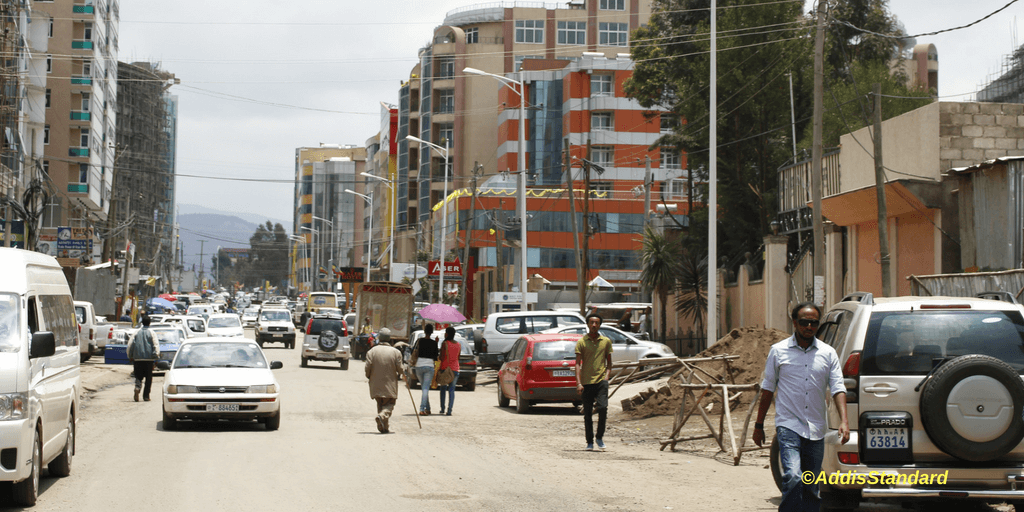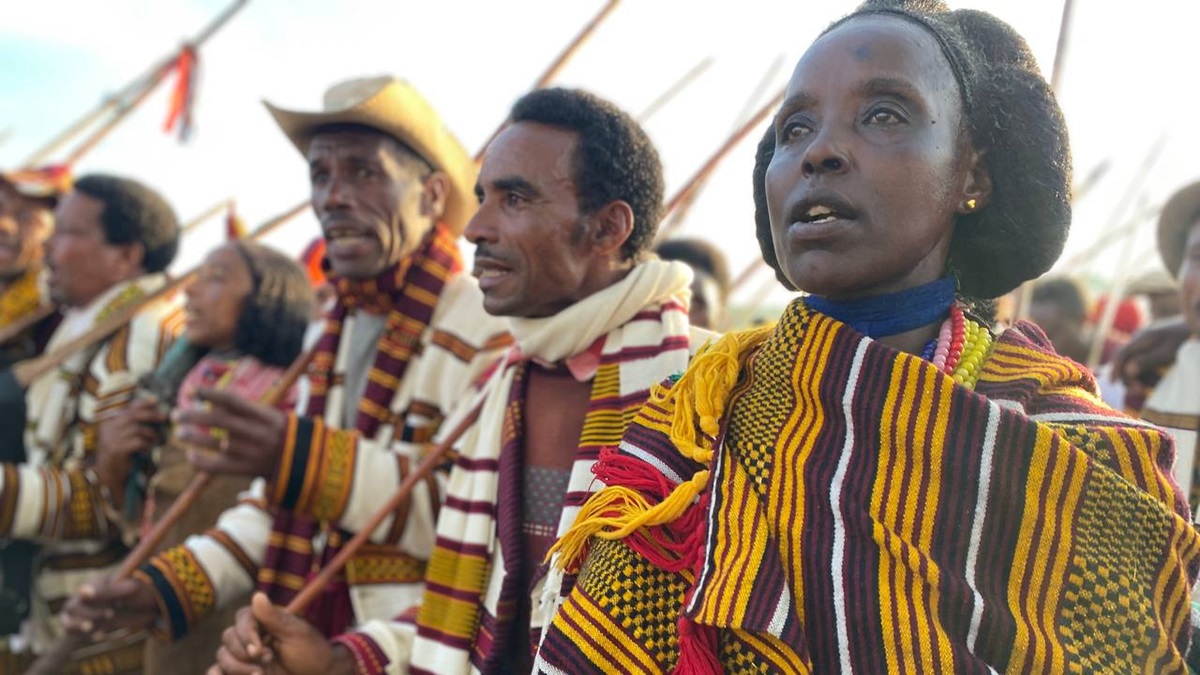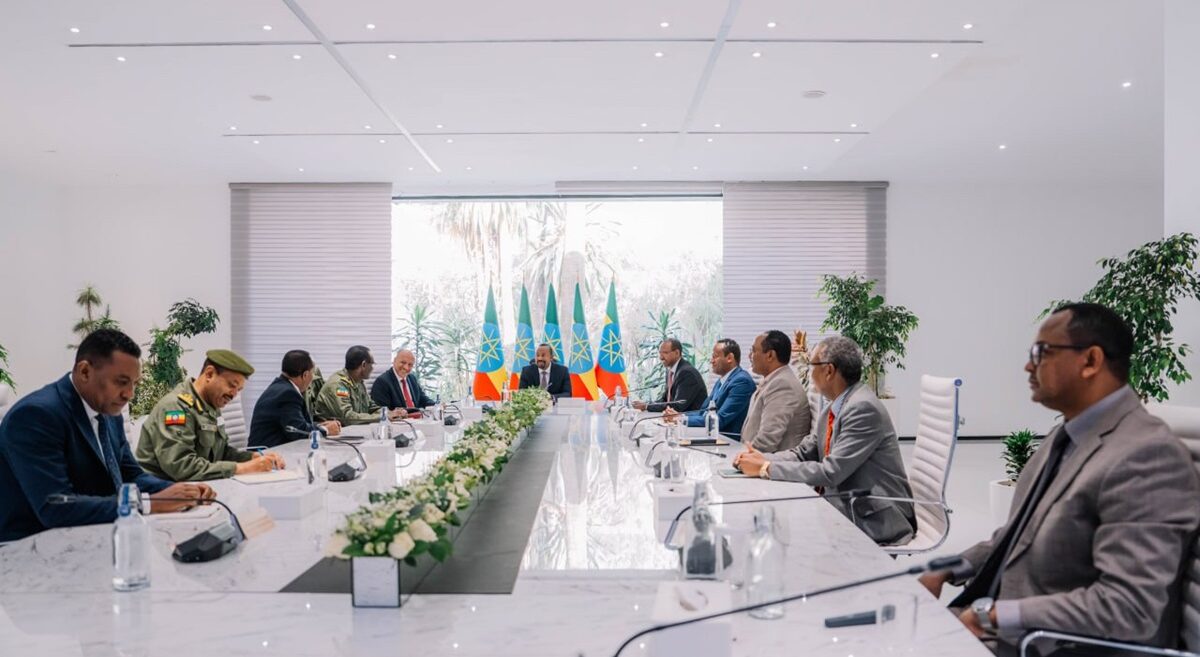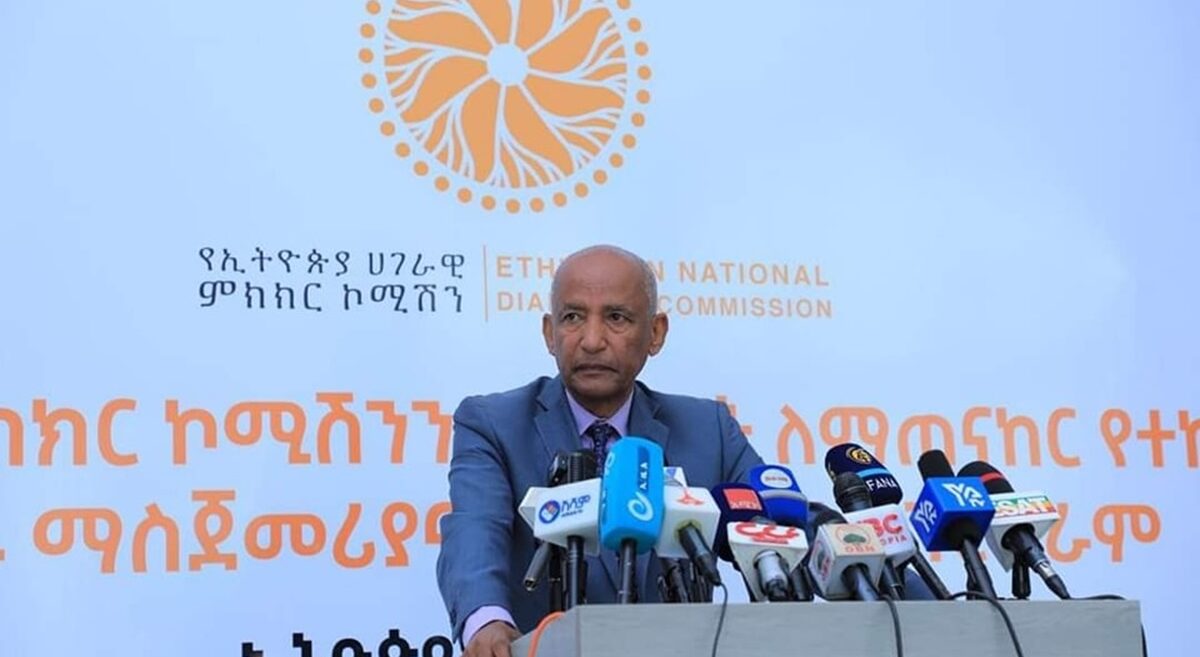Commentary: No Power Can Suppress People Power: The Hubris of Power against the Challenge of Barefoot Democrats in Ethiopia
Photo: Oromo festival goers chant protest slogans during the deadly Irreecha festival in Oct. 2016.
Ezekiel Gebissa, Special to Addis Standard
Addis Abeba, March 23/2018 – In his widely acclaimed book, Seeing Like a State: How Certain Schemes to Improve the Human Condition Have Failed, James C. Scott examines why state-sponsored social engineering schemes – socialist collectives in the Soviet Union and Tanzania or compulsory “villagization” of Ethiopia – that have caused the death of millions and shattered millions of lives were permitted to drag on indefinitely long after their failure had become too obvious to ignore. The main reason for this is a “philosophy” called high modernism, which seeks to impose a rational or “scientific” order on society to arrange social life in a way that makes it easy for the state to monitor and control. Using high modernist platitudes about the Greater Good or “scientific” rationalism as cover, Scott posits, decision-makers put into practice the totalitarian schemes they wanted to implement anyway. The resulting experiments are usually failures by the humanitarian goals of the modernists, but resounding successes by the command-and-control goals of the state. This occurs not because decision makers deliberately ignore failure, but because they simply do not see it. And they don’t see it because they are, in James C. Scott’s phrase, ‘seeing like a state’, that is, they are influenced by the desire to make society “legible,” comprehensible and controllable by political power.
The Ethiopian government, which seemed so secure during the rule of the late Prime Minister, Meles Zenawi, is currently in the midst of a multidimensional crisis that has brought the country to the brink of regime collapse. In this article, following James Scott, I argue that current crisis is rooted in the enunciation of the “developmental state” as the primary tenet of “governance” in the aftermath of its ignominious electoral loss in the 2005 national elections. In this view, “development” came to require state coercion to create the conditions that would undermine democracy and prosperity, including eviscerating constitutional rights. The democratic deficit that resulted eventuated in a protracted popular protest that started in 2014 and escalated over the subsequent years to well-organized movement that now has become an existential threat to the state.
Defining the challenge as one of the many inter-party factional disputes, the regime has responded with indiscriminate violence, making adjustments to its party structure and refurbishing its rhetoric of governance. It has thus far succeeded only in raining bullets on citizens peacefully resisting its dominance but it has failed disastrously in addressing the demands of the people. If the regime persists on asserting the rightness of its policies, continuing the outlook of “seeing like a state,” and refuses to address the legitimate demands of the people, the outcome is foreordained: regime collapse which, if the incumbent stays the course, will inevitably be followed by state collapse.
The provenance of the crisis
Though the Tigray People’s Liberation Front (TPLF) never intended to share power from the onset of its stint in power, its strategic goal was publicly proclaimed in the wake of the 2005 elections. The late Meles Zenawi made very clear his direct control of the political process through the institutionalization of the ideology of “revolutionary democracy” in the form of the “developmental state.” By so doing, he planted the seeds of the current crisis. The country’s modest, if controversial, economic growth, the regime’s growing control over the country’s military and security apparatus and its close partnership with the United States in the war on terror, combined to reinforce Meles’s belief in the rightness of his vision and its implementation by any means necessary. Surrounded by sycophantic advisors who only reinforced his belief that his political acumen could overcome any challenge, he became increasingly unrealistic in his aspirations. Using the constitution as an instrument to amass personal rule, he sought to ensconce himself securely at the apex of power in the country.
In 2005, confident that the Ethiopian electorate will affirm his party as the only guarantor of peace and prosperity for the country, he permitted a relatively free and fair elections to take place. The opposition performed unexpectedly strongly and perhaps won the election. However, the government chose to nullify the election results and crackdown on any opposition. The political conditions in the country quickly began to deteriorate as violations of political liberties increased, making Ethiopia a pariah state in the eyes of the world. The government passed three draconian laws to prop up its weakening hold on power. A Press Law approved by parliament in July 2008 added to the numerous restrictions placed on the activities of journalists in Ethiopia. It made journalists and editors potential accomplices in acts of terrorism if they published statements that the government views as an act of sedition. A Civil Society Organizations (CSO) Law passed in January 2009 prohibited foreign non-governmental organizations from engaging in any work on human rights or governance, rendered most independent human rights work virtually impossible, and made all human rights work declared illegal by the government punishable as a criminal offense. An Anti-terrorism Law passed in July 2009 provided broad powers to the police and for harsh criminal penalties to be applied to political protesters and others who engage in acts of nonviolent political dissent.
All of these restrictive laws were deemed “constitutional” since they were passed by parliament. They were allegedly meant to protect the constitutional order from anti-peace, anti-democracy and anti-development forces. The entire federal government apparatus was deployed to implement these “laws.” The justice system was rendered subservient to the executive in order to enforce the will of the ruling party. The security system was organized in such a way that it can be readily deployed to destroy legal opposition. The national election commission was restructured to conduct elections in which the incumbent will always be declared a winner regardless of how voters cast their votes.
The developmental state, declared in the aftermath of the 2005 election debacle, was meant to be a new social contract in which political power would be ceded to the Ethiopian People’s Revolutionary Democratic Front (EPRDF) in exchange for prosperity. In practice, no matter what success was achieved in the economy, the legitimacy it sought didn’t pan out. The vast majority of the beneficiaries of economic growth was the nuveau riche, people who succeeded in converting their political power into an instrument for amassing great wealth. Addis Abeba’s skyline has changed clearly but the new buildings that have now given the city an appearance of modernity are reportedly owned by regime functionaries and acolytes. The ruling party itself owns businesses worth a tenth of the economy when one adds up the net worth of four mega businesses owned by the EPRDF coalition partners. As such, the growth registered by the economy was siphoned to buy off high ranking military officers, party apparatchiks and corrupt businessmen whose wealth flowed from political patronage. The “Ethiopia rising” narrative, which the regime promoted tirelessly, was in fact the “Ethiopian paradox” because of the difficulty of having economic development without political development.
New ideas, political programs and leaders could not emerge easily because of repression by the expansive security structure which controlled individual behavior. Moderate politicians who simply wanted to implement the promises of the constitution were hounded by the regime and hauled into prisons. Despite the all-encompassing nature of the regime, which extended surveillance power to small villages and hamlets, many Ethiopians began to question the legitimacy of the ruling party and the whole system of government which overtly favored and promoted the welfare of the ethnic group which constituted only 6% of the population. Despite the relentless echo of “Ethiopia rising” narrative, TPLF-EPRDF rule came to be viewed widely as illegitimate.
When the architect of this system, Meles Zenawi, suddenly died in August 2012, the party touted its “achievement” that power had been transferred to the successor, Hailemariam Desalegn, as the first peaceful transition of power in Ethiopia. This was not the case. Meles’s death was the beginning of the unraveling of the EPRDF coalition. His death robbed the party the ideologue who was able to manufacture ruling ideas, including articulating revolutionary democracy and the developmental state. It removed the lynchpin on the political, military, security, party and economic edifice that the ruling party had built over the preceding two decades.
Succession crisis was resolved by endorsing a man who is now described as a place-holder, after six years in the office of the prime minister. His speeches and actions were viewed by Ethiopians as idle theatricals. In 2015, he ostensibly led his party to “winning” 10o percent of the seats in parliament in the middle of unprecedented unrest in the Oromia region. Just a month after he formed his administration and resumed his premiership after an election he “won” as an incumbent, the historic protests that has now lasted for three years erupted.
Diffidence to hubris
TPLF’s political narrative that it ascended to power after “defeating” the largest army has been constantly employed to claim legitimacy that comes from the right of conquest and to use it as reputation to scare off political opponents. Its leaders were acutely aware that the fall of the military junta offered them their best chance to return to power exactly a century after Emperor Yohannes, the last Ethiopian ruler form Tigray, was killed in Metema in 1889. Contrary to conventional wisdom, the rebel leaders were diffident that they could stay in power as a group representing a minority group. Given that the liberal left from the Ethiopian Student Movement days was fragmented and the conservative right had no forward-looking vision except invoking the myth of “Great Civilization,” the TPLF seized a historic opportunity and filled a political vacuum promising peace and a democratic federal state.
As the memory of war receded, TPLF leaders had no qualms stating that their goal as a party is to create a Tigrean middle class. All of this was finally justified as a necessary condition for economic take-off. In an interview with the Voice of America, Sebhat Nega, TPLF’s paramount leader said that the goal of his party was to “enthrone capitalism in Ethiopia and then wither away as a party.” Sebhat put it in his pedestrian language, making the departure of the TPLF from power conditional on economic development. It is this same position that the party’s ideology put together as the “developmental state,” which I put earlier as the source the current predicament.
The trappings of democracy such as elections notwithstanding, the regime has always been a military government whose political power came out of and depended on the gun. During the Transitional Government (1992-95), the EPRDF militia served as the national army. As time passed, the military rank-and-file was broadened to change the composition of the armed forces and formal military rank and compensation structure was introduced but the regime lavished benefits on high ranking military officers to ensnare them and keep them in the party’s political orbit. While military commanders are ostensibly apolitical, it is very clear that they remain highly politically connected. The armed forces have not been separated from the EPDRF’s political structures.
Beyond active and retired military officers’ widespread involvement in the business sector, the TPLF-EPRDF government has taken steps to increase the military’s stake in the economy. In 2010, the government created the Metal and Engineering Corporation (MetEC). Officially, MetEC was created to ensure technology transfer to the country. According to the proclamation which established it, MetEC is directly accountable to the prime minister. Practically, it is a military industrial corporation operated by the ministry of defense. The corporation is involved in all sectors of the economy: manufacturing, construction, energy, and transportation, among others. The military has become an economically powerful actor. MetEC is also mandated to manufacture and supply weapons to the country’s defense forces, including armored vehicles, explosives, ammunition, big guns, light weapons and personal weapons. The Ethiopian defense force needs to import only military aviation and high tech military intelligence equipment’s. Thanks to the war on terror, it receives much more than that from the United States. It is a heavily armed military.
Those who have become fabulously rich through political patronage, otherwise known as the oligarchs, the stakeholders of the party businesses and the military that has become an autonomous power have now made common cause in preserving the political power structure that made them limatawi bale habtoch or “developmental owners of wealth.”
These oligarchs are aware that the wealth they have amassed, as individuals and as a party, is an ill-gotten wealth. Transparency International data shows Ethiopia suffers from high levels of bribery. The country ranks 107th out of 180 countries. Surveys of corruption perception show favoritism and nepotism to be widespread, political appointees are in charge of private businesses and they direct government contracts and loans to the enterprises they lead. Change in the political structure is unwelcome event because it will not only end the rapacious plutocracy but also shut off the spigot of further growth. Ominously, a new democratic state that comes to power through popular demand will be accountable and will itself be required to hold everyone accountable. Democratic change is a threat to TPLF’s dominant position in Ethiopia’s political and economic structure. Power is now used to protect private interest. This power is rooted in the use of the Ethiopian National Defense Force as an elite private militia. It is now unleashed against the Ethiopian people under the guise of a state of emergency (SoE) administered by a Command Post. Ethiopia’s political and business elites have decided to make their last stand to protect their wealth and power by using a military that made an interested party in protecting the oligarchs’ economy of predation.
The last stand
The Ethiopian regime is now in the growing pains of fin de regime that started in 2015 with a popular protest in Oromia, uprisings in the Amhara regions and periodic tremors in other regions of the country. The Tigray People’s Liberation Front (TPLF)-dominated Ethiopian People’s Revolutionary Democratic Front (EPRDF) government initially blamed external agent provocateurs, then internal “anti-development, anti-democracy and anti-peace forces” and finally youth unemployment, administrative incompetence and widespread corruption within the government and party structures.
The current crisis differs from the factional disputes that have periodically erupted within the governing party. The protests have deeply-rooted political, ideological, economic and cultural causes, including the increasingly centralized nature of decision-making in a one-party state, discriminatory allocation of resources and benefits of economic growth, and the destruction of all the political opponents of the regime. For more than a quarter century, specifically in the last dozen years, an unsustainable level of inequity has been parading as a “development” that, according to the late prime minster, Meles Zenawi, is a necessary precondition for building a democratic state. A revolution from below based on the political activism of millions of people who are determined to deploy nonviolent methods to overthrow a tyrannical totalitarian regime has pushed the regime to a precipice.
The regime has recognized that the crisis has conjured up the specter of regime collapse. Its actions have resulted in the death of thousands, imprisonment of hundreds of thousands and displacement of millions from their homes. Taking responsibility for all the tragedy, the Executive Committee of the EPRDF resolved to carry out structural reforms in the entire federal government structure and release political prisoners. The prime minister, Hailemariam Dessalegn, resigned both as prime minister and chairman of the ruling party “to be part of the efforts to provide a lasting solution to the current situation.” These actions raised hopes that the inevitable transition to a new political dispensation would occur in peaceful for the first time in the country.
The hopes for peaceful transition to a democratic federal constitutional dispensation were dashed when, in the morrow of the prime minister’s resignation, an equally unexpected SoE was declared. The optimism unleashed by the release of prisoners was soon replaced by despair about the return of the authoritarian rule that had seemed on the way out. The SoE is unconstitutional, it is a violation of international norms, it is politically disastrous and it is unjustified by the reality in the country. The House of People’s Representatives was supposed to reject it. By so doing, it has occasioned a possibilities of a regime collapse that will be followed by state collapse. The fault lines are clear. The flash points were seen in the eastern, southeastern, southern parts of the country beginning last August where a million Oromos and hundreds of Ethiopian Somalis were displaced. In recent months, other incidents have flared up in the western part where opposition politicians were held up protected by potentially outgunned Oromia police against a heavily armed federal forces.
As time passes, the revolutionary movement that started as Oromo protests came to include religious people, politicians of various types, farmers, the unemployed, civil society leaders, women and the other groups. The government appears to show that it intends to meet the demands of the protesting crowds by appointing a reformist prime minister and, alternatively, by using the army to repress the demonstrations. In various cities, such as Ambo, Dembi Dollo, Gimbi, Ginchi, Naqamtee and recently Moyale, several dozens of people were shot. If the killing continues, the crowds will come out to bury the dead. If the behavior of the security remains the same, they will shoot to disperse the mourners. Larger crowds will become as the number of the dead mounts and the bloodbath on the scale needed to repress such enormous numbers of demonstrators will become intolerable to ensure loyalty of the troops becomes suspect. If the pattern of resistance we witness holds, strikes will paralyze the economy. The government may have to either embrace reform wholeheartedly. If not, all bets are off. A cycle of death- burial-demonstration- death will commence. In a contest between the people and an unpopular government, the latter usually loses ignominiously.
Barefoot democrats
The cycle happened before in a country with a parallel history. Ethiopia and Iran have a fairly similar trajectory of history until they diverged following anti-monarchical revolutions that occurred in both countries in the 1970s, which produced an Islamic republic in Iran and a socialist republic in Ethiopia.
In 1978, a popular uprising occurred in Iran. The shah initially attempted to quash the rebellion with force but the pressure finally became too intense, and Muhammad Reza Pahlavi went into exile hoping that the monarchy and army could be preserved under a regency for the crown prince. A nationalistic and moderate prime minister was appointed. But the revolutionary movement was so widespread, and its leadership under the direction of Khomeini was so adamantly anti-monarchical, that this policy failed. All of the shah’s enormous stockpile of weapons, the attention given to the officer corps, and his nationalistic aspirations for glory and grandeur went for naught. Amid great popular rejoicing, the old system of government was brought to an end, and a new experiment began. As in the constitutional revolution of the 1900s, Iranians had determined their own fate, irrespective of the wishes of the great powers.
The Ethiopian regime is alone on planet earth in believing that it is possible “to destroy a village in order to save it.” The military that the government believes can be used to impose its will on the people by force is no longer composed of the TPLF militia it once was. If current level of violence continues, members of the military will get to a position where it could no longer serve TPLF’s chock hold on political power to maintain the economic dominance its elite have attained by spilling innocent blood to maintain. Violence may prolong the struggle against this tyranny and may require higher cost than necessary. It will not prevent change from happening because the people want it.
The apparent return of violence should not be viewed as regime resilience but as a sign of an embattled regime digging in as it is besieged by an increasingly demanding populations. The desire for “democratic transition” in Ethiopia is not superficial. Fear that Ethiopia’s democratic experiment has failed is probably an optical illusion. The notion that the demand for transition to a democratic order is an elite ploy to wrest power is EPRDF’s excuse to maintain its rule of violence. The strength of democracy in Ethiopia, in fact, is not to be found in the external signs of democratic development but in the popular tendencies at work in the country. In other words, the “indicators of democracy” elaborated in Western political foundations do not measure democratic processes at work, but rather their results – free elections, political liberty, peaceful transition of power etc. By those measures, even military men who have “won” elections qualify for the epithet of “warlord democrats.”
The process currently under way, to which indicators are blind, are made up of struggles that are shaping the future of democracy in Ethiopia. In this regard, the most visible indicator of the unyielding demand for democracy is the Oromo protest led by courageous young men and women who are determined to defeat a brutal dictatorship. The cultural mobilization that started to occur in the long Oromo national struggle detonated a real artistic explosion in the 1990s that has led to a new nationalist renaissance among the Oromo. The effects of this is now being felt politically across Oromia. The fabric of culturally-rooted civil society is now so dense and well-rooted that it is assuming its role as a sentinel of social forces in the country. This broad popular process – whose proclaimed objective should be deepening democratic gains, strengthening rights and liberties, consolidating political and social dialogue, and improving conditions of life of the citizens, to recreate the immense hope aroused by the change of government of 2000 – illustrates the powerful moral wellspring of the Oromo society. AS
ED’s Note: Ezekiel Gebissa is a Professor of History and African Studies at Kettering University in Flint, Michigan. He can be reached at egebissa@kettering.edu








